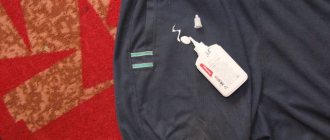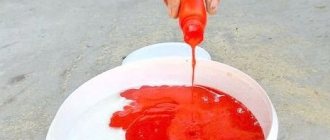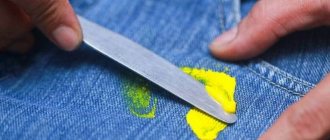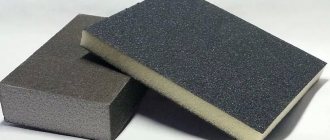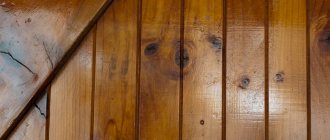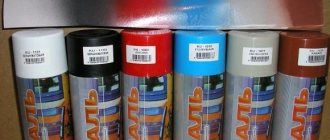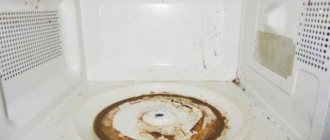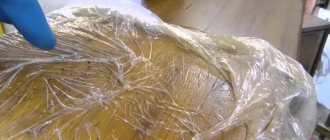Adviсe
- Mistakes when removing old paint
- Removing paint using a hair dryer
- Removing old paint using solvent
- Removing old paint using a sander
- Removing paint from carpets
- Removing paint from furniture and glass surfaces
- Removing paint from clothes
Paint is one of the most famous building materials. It is used everywhere - for cosmetic repairs in the house, painting metal surfaces, in large construction, etc. To repaint the surface with fresh paint, you must remove the old layer. In addition, if you are careless, you can stain your clothes, from which it is difficult to remove paint stains.
However, knowing the basic rules for removing paint, you can do it very quickly.
How to remove alkyd enamel from tiles?
How and with what help can you remove old alkyd enamel stains from ceramic tiles without damaging the surface?
If the stains are very old and also quite thick, then it is better to start with a mechanical cleaning method. Carefully, with a thin spatula or even a new stationery knife, cut off as much of the layer as possible from the surface of the stains. Well, then finish cleaning with the help of those solvents that are intended for this enamel or alkyd varnish. This is the well-known white spirit, or an equally valuable substitute - xylene or solvent. In principle, even gasoline can dissolve dried enamel - but only gasoline is quite volatile and will naturally evaporate quickly. Therefore, you just need to soak a cloth in white spirit and apply it to the remaining stains. Wait a little for the dried layer to soften and then wet the cloth again and completely wipe off the stain. Well, then it’s better to treat the surface with some good detergent. To remove residual essential oils and reduce the pungent odor. You can safely use an ordinary kitchen Ferry - after a couple of times it will not leave any traces or smell at all.
How and with what help can you remove old alkyd enamel stains from ceramic tiles without damaging the surface?
Before answering this question, you need to understand what an alkyd resin is. Alkyd resin is a polycondensation product of polybasic fatty acids and polybasic alcohols or polyols. Naturally, when selecting a solvent, you need to remember the rule of chemists - like dissolves better in like. And since alcohols and acids are oxygen-containing compounds, alcohols and other oxygen-containing compounds are naturally suitable for dissolving alkyd resins. But since alkyd paint is old, you will have to experiment. In particular, you can try acetone and a mixture of high-octane gasoline with acetone or alcohol. Why is high octane gasoline required? The fact is that it contains derivatives of toluene and xylene, which dissolve better than galosh gasoline. You can also use a purchased aerosol; it has very good reviews.
Source of the article: https://www.remotvet.ru/questions/19579-kak-steret-alkidnuju-emal-s-plitki.html
Nitropaint
Nitro paint is a persistent compound that requires aggressive compounds to remove.
The cleaning process looks like this:
- Freshly deposited contamination can be removed using acetone
. Lay the item on a flat surface and soak the stain. Then pour solvent on it, wait a couple of minutes. Then rinse under running warm water and squeeze out. Lay out again and fill with dishwashing detergent and wash.
- Using a special solvent
, it can be purchased at any hardware store. Please note that this product is quite aggressive, so it is not suitable for delicate fabrics. Apply a small amount of solvent to the dirt and scrub thoroughly with a sponge. Rinse, wash.
How to clean alkyd paint
The surface is covered with old paint and primer. In some places it is peeling off, peeling off, and does not hold on. It needs to be washed off and repainted. (10+)
How to remove paint and primer?
The surface is covered with old paint and primer. In some places it is peeling off, peeling off, and does not hold on. It needs to be washed off and repainted.
If the primer, paint or enamel adheres well to the surface, then they do not need to be removed before repainting. A new coating usually adheres well to old primer, acrylic or latex paint. Of course, there is no guarantee, so try it on a small and inconspicuous area first. The new coating will not adhere to the enamel. In this case, and if the experiment has shown that the new coating does not fit on the old coating, use a suitable, for example, universal primer, and then paint with new paint.
Latex paint
Now let’s figure out how to wash latex paint from clothes.
- The first thing to do is spray hairspray
. If you don’t have varnish at home, you can use any product that contains alcohol, or pure alcohol. Then start rubbing vigorously with a sponge or rag, periodically moistening it with alcohol. The final stage is washing and drying.
- You can also use alcohol with salt
. The salt will act as a kind of scrub; wet the dirt with alcohol and sprinkle salt on top. Rub thoroughly and rinse in warm water.
Washing off acrylic, latex and alkyd coatings
Most primers, paints and enamels are washed off with R-4 solvent. This is a very harsh solvent. Before starting work, make sure that it will not dissolve the base from which you are washing off the paint. Work with gloves, safety glasses, in a well-ventilated area, or better yet, outdoors. If it comes into contact with the skin, and especially the eyes, this solvent can leave a poorly healing chemical burn. Inhalation of vapors may cause burns to the respiratory tract. But it dissolves literally everything very well. I accidentally dropped it on the vacuum cleaner hose. I had to buy a new hose - it ate right through.
You can try removing acrylic and latex paints with white spirit. It dissolves them quite well.
When flushing, use feminine sanitary pads, the simplest and cheapest ones. They absorb soil or paint well, dissolved with a solvent and removed from the wall. Don't skimp on gaskets. We washed a piece of the surface, collected the dissolved paint, and threw away the gasket.
Standard Cleaning Procedure
When using specialized products to remove old paint from metal, the cleaning procedure should follow the following rules:
- Before starting work, you need to read the instructions, which outline the rules for using the wash.
- The surface to be cleaned must be as free from dust and dirt as possible before starting work.
- The cleaning agent is applied liberally to the surface with paint residues. To do this, you can use a brush, roller or spray gun.
- Wait the required amount of time according to the package directions, allowing the chemical to break down the paint, soften it, and cause it to peel off.
- When signs of paint deterioration become obvious, you need to use a sharp spatula to clean the surface.
Applying a remover loosens the paint layerSource syntilor.ru
It is not always possible to completely clean the surface on the first try. In this case, the processing is repeated until the goal is completely achieved.
After finishing the treatment, traces of the wash and some dust and small paint residues remain on the metal surface. For final cleaning, use the composition recommended in the instructions for use. If it is not possible to cook it, you can rinse it with plenty of warm water. This will help clean, but will not be as effective as the recommended products.
Before applying a new coat of paint, it is recommended to degrease the surface.
Softened paint can be easily removed with a spatula. Source www.aimone.ru
Removal of epoxy varnishes, paints and enamels
Epoxy enamel, paint or varnish cannot be washed off. Only mechanical removal, sanding.
You may be interested in the article: Painter's tutorial.
(read more...) :: (to the beginning of the article)
Unfortunately, errors are periodically found in articles; they are corrected, articles are supplemented, developed, and new ones are prepared. Subscribe to the news to stay informed.
If something is unclear, be sure to ask! Ask a Question. Discussion of the article. [1] messages.
I installed a new wing on the car in the factory primer. There is an acrylic primer and alkyd enamel. Tell me step by step the painting process, based on the materials available. Thanks in advance for your advice. Read the answer...
Close the junction of the bathtub + walls, tiles, tiles. Glue, glue, glue b... How to reliably and durablely close the junction of the bathtub and the wall? If the wall is made of panels, slabs...
Knitting. Stained glass. Drawings. Pattern diagrams... How to knit the following patterns: Stained glass. Detailed instructions with explanations...
Knitting. Royal crown. Drawings. Pattern patterns... How to knit the following patterns: Royal crown. Detailed instructions with explanations...
Knitting. Repeated knitting: knit two loops from two loops. Ri... How to knit a combination of loops: Repeated knitting: from two loops, knit two...
Why does a wooden floor squeak... My practical experience in dealing with floor squeaks. And also advice from old people. How do I get off...
Oven with adjustment, heating control.... An interesting design of a heating stove with adjustable room heating...
DIY porch. Homemade entrance staircase, entrance, porch. With... How to make a comfortable porch yourself, the entrance of your country house. Detailed description…
Insulation, thermal insulation of the house with your own hands... Insulation, thermal insulation of the house. Little-known, but very important facts, I share personally...
Choosing a paint remover is far from an easy task with a ready-made solution. The type of paint, the type of surface on which it is applied, and, to a large extent, the state of your personal budget are the main factors influencing this choice.
Removing paintwork (photo source - Yandex.Images)
Place .
and subscribe to the channel “ Svekrovi.Net ” . This will allow us to publish more interesting articles.
Hair dye
Every woman faces this problem from time to time. But don’t rush to despair, the problem can be solved, and quite quickly.
First of all, immediately rinse the mark under running warm water and soap it with laundry soap or stain remover soap.
If the result is not achieved, try the following:
- Hairspray
or
alcohol-containing products
. Dampen the sponge with alcohol or varnish and start scrubbing. When all the coloring pigment has completely disappeared, wash the product. - Hydrogen peroxide
. Pour peroxide into a small container and place the damaged area of clothing there for half an hour. After the time is up, machine wash it.
For removal from plastic
Due to the physical properties of this material, the use of mechanical or thermal options for removing paint is sharply limited. If you use a mechanical method to remove paint from plastic window frames or from the plastic surface of a window sill, you can ruin the appearance of the apartment so much that you will want to replace the entire window opening. With the thermal method, plastic products may warp.
The exception is heating water-based paint to low values: 60–70°C. It is better to do this with a construction hairdryer with temperature control. As a result, the water emulsion swells and is easily removed from the plastic surface. In other cases, to remove paint of a different composition from plastic, it is better to use a chemical method. Any other kind is removed from plastic using special removers, the main disadvantage of which is their toxicity.
A product for removing paint from plastic (photo source - Yandex.Images)
In addition to them, the following chemical compositions are used:
- 20% solution of caustic potassium or caustic sodium (50% solution of caustic soda is allowed), with exposure for 4–5 hours;
- solvents used in the preparation of paint (white spirit, solvent and others);
- “Mole” brake fluid – a gel for clearing blockages in pipes;
- methanol
When using methanol, it is important to remember its strong toxicity and rinse the surface well after treatment.
There is an effective option that does not contain toxic substances at all. This is a method based on the use of silicone sealant or liquid glass.
A plastic product (can be effectively used for voluminous, complexly shaped surfaces) is covered with a layer of sealant. The mixture is kept until completely dry. Next, an incision is made carefully with a sharp object, and the entire film is completely removed from the surface of the plastic.
For removal from glass
When painting work is carried out, no matter how carefully it is done, traces of paint remain, disturbing the appearance of glass window openings. An effective way to remove fresh stains from a window is to use universal special products designed for removing paint from glass. For dried traces, you can use already known methods: mechanical, chemical or thermal. A softened paint stain, given the hardness and smoothness of the glass surface, can be easily removed manually with pointed objects.
Cleaning glass from paint (photo source - Yandex.Images)
Varieties and composition
The following types of painting materials are used for painting work:
- emulsion;
- alkyd;
- silicate.
Emulsion paints (photo source - Yandex.Images)
Emulsion paints are obtained by diluting their constituent components on a water basis.
Depending on the binding materials and coloring particles, they, in turn, can be of different types.
- Water-based.
- Water-dispersed. Compared to water-based ones, they have increased moisture resistance.
- Acrylic. Here, acrylic resin acts as a binding base.
- Latex based. In the production of these paints, latex is used, a material made from natural or artificial rubber. Therefore, latex ones are the most expensive of emulsion ones.
- Polyvinyl acetate. The composition of the paints is based on the synthetic polymer polyvinyl acetate, which has high adhesive properties.
- Silicone. The basis is silicone resins.
The second type of coating is alkyd. The components of alkyd resin act as the binding material here.
Alkyd paints come in oil and enamel paints
And finally, the third type - silicate paints, in which liquid glass is the main component, belong to mineral paints. They have limited use, contain alkali, and are used when painting plastered surfaces.
For removing from metal
Car owners often face the problem of removing paint. After using your equipment for a long time, you want to renew the tarnished coating. Situations where it is necessary to remove it also arise when the car is involved in an accident. When renovating apartments, there is a need to remove the old coating from pipes and heating radiators. Fans of powerboating know how to remove paint from not only iron surfaces, but also aluminum.
Rating of the best funds
The domestic market has a wide selection of chemicals for paint removal from foreign and Russian manufacturers. It is not possible to choose what is called the most powerful remedy. The point is that each works well in a particular case.
According to marketing reviews and customer reviews, the following formulations are most often chosen.
The description of paint removers contains numerous photographs and videos. They talk about ways to remove paint from different surfaces.
Basic rules for cleaning fabrics yourself
Before attempting to remove paint from clothes, remember the following rules:
- if the item is expensive, it is better not to experiment, but to take it to the dry cleaner;
- It is necessary to clean the stain as soon as possible - as time passes, it is removed worse;
- start from an inconspicuous edge of the soiled item to check whether this product will not damage the material;
- After cleaning, machine wash is required.
Washing in a machine is a mandatory step in removing dye from fabric.
Features of removing paint from plastic
To remove paint from plastic, you should know the removal features. This will help avoid possible troubles and save time.
When removing paint, adhere to the following rules:
- a fresh blot is faster and easier to remove than an old one;
- fresh stains are removed using water and any detergent;
- old contamination is pre-prepared (treat the surface with a solvent) and then washed off;
- When working with electrical devices, adhere to safety precautions;
- Use a removal method depending on the type of paint.
Important! To prevent the plastic from being accidentally contaminated during painting, use construction tape. It is used to paste over plastic products.
Water-based paint
It is not difficult to remove the water-based trace, especially if it has not yet dried, just rinse it under running warm water. And then soap it with soap or put it in the washing machine. But if the solution has already dried, you must first clean the top dried layer. To do this, use a construction spatula or a similar object; you need to scrape very carefully so as not to damage the texture of the fabric. Once most has been cleaned, the residue can be removed using the following means:
- Solvent
. Moisten the problem area with this product, set it aside for a couple of hours, and then wash it as usual. - Petrol.
Dampen an unnecessary rag with gasoline and start scrubbing the blot. After the problem disappears, you need to wash the clothes at the maximum permissible temperature.
Tips and tricks
For convenience and time saving, experts recommend using several useful tips. These include the following:
- If paint gets on plastic, immediately take measures to eliminate the contamination.
- The soap solution is removed with a wet cloth and then with a clean dry one.
- When working with chemicals, be sure to wear rubber gloves and carry out the procedure in a well-ventilated area. In addition, a protective mask is used to minimize the entry of harmful substances into the body.
- Before carrying out the procedure, check the reaction of the product to the paint remover from plastic. This will help avoid unpleasant consequences. To do this, the substance is applied to a small area of the product and wait about 15 minutes. If after the specified time nothing happens, then the product can be easily applied to the entire problem surface.
- To soften a large contaminated area, a soap solution or water is applied in small portions so that the softened paint does not have time to dry while part of the surface is being treated.
- When washing off paint from large surfaces, use feminine sanitary pads. They perfectly absorb contaminants dissolved by chemicals.
These practical recommendations will help you successfully deal with contamination.
Watercolor and gouache
Watercolor or gouache can be washed off quite easily, the main thing is that the following rules are followed:
- You need to start cleaning immediately after you have made a blot.
- Immediately blot the stain with a napkin or scrap cloth.
Products that will help remove stains:
- If we are talking about finger watercolor paint, just moisten the stain in warm water. Lather with laundry soap, rub thoroughly, leave for 20-30 minutes and rinse. If after the first time the desired effect was not achieved, repeat it again.
- Ammonia plus glycerin
. It is necessary to combine these two components in equal proportions, after slightly heating the glycerin, and apply the prepared composition to the contamination. Leave for 60-70 minutes, and then rinse and wash.
- Composition for degreasing dishes
. Soak the problem area in warm water, then apply a couple of drops to the blot. Rub and rinse; to increase the effect, you can soak the product in this product for several hours.
- To remove the substance from white clothes, use special
paint stain removers Compositions from Sodasan, HG, Boss, Vanish cope well with this. You must act in accordance with the manufacturer's recommendations.
- Using solvents
, such as nail polish remover. Soak a cotton swab in solvent and start cleaning. It is necessary to process from the edge to the center of the stain, continue the procedure until the color pigment completely disappears.
How to clean old stains?
You can fight stubborn stains with baking soda or vinegar. Solvents that are more effective include acetone and turpentine. You can also use kerosene.
Soda
Baking soda is a product that has a good cleaning effect. The substance is safe for humans.
To clean acrylic paint from products, you must use soda powder:
- sprinkle it liberally on the trace of the dye;
- soak the sponge with water;
- vigorously begin to rub soda into the dirt, use a stiff brush to enhance the effect;
- wash off the baking soda from the surface with warm water.
A combination of baking soda, dish soap and lemon juice will make it easier to remove stubborn acrylic stains from items.
How to wipe with vinegar?
This product contains acetic acid - it is a good solvent. You need to first rinse the surface with cold water and then soak the dirt on it with vinegar. You can warm up the solution a little.
The area treated with vinegar must be thoroughly wiped with a sponge. Then you need to wash the surface with warm water. Working with vinegar should only be done with gloves and a respirator.
Acetone
This substance is used to dissolve dyes and varnishes. It is recommended to use pure acetone to remove acrylic from various surfaces, and not the one that is included in nail polish removers.
It is necessary to thoroughly saturate the paint stain on the product. Then you need to wait 5 minutes for the acetone to begin to dissolve the old paint. It is necessary to wipe off the dirt with a sponge. You can use a brush.
How to remove stains with turpentine?
This substance dissolves well not only dyes, but also varnishes. Turpentine can be used to remove old paint.
It is necessary to moisten the acrylic stain on the product with it and allow the solvent to absorb well into it. After this, use a sponge or brush to thoroughly rub the turpentine into the stain.
After treatment, the surface should be washed with water. Turpentine must be kept away from sources of fire.
Kerosene
This hydrocarbon mixture can be used as a solvent for dyes. Kerosene does a good job of corroding old acrylic marks.
It is necessary to moisten the dirt generously with the mixture.
It is important to wait about 5 minutes for the stain to soak in the kerosene. After this, you can begin to scrub off the dirt with a sponge.
If the stain is stubborn, then you need to use a stiff brush. After treatment, you need to thoroughly rinse the surface with warm soapy water and then with clean water.
What to do if nothing helps
If you have tried folk methods and professional remedies, but they did not have the expected effect, then you can throw things away or try to restore them with aggressive means: purified kerosene, gasoline, solvent (for example, white spirit), acetone.
Throwing things away
Their use may affect the quality of the product and the shade, so resort to using them as a last resort:
- You can pour a little of the chosen product onto white clothes, and soak colored ones in water containing acetone, gasoline or kerosene.
- After 20–30 minutes, wash the stain by hand.
- Wash thoroughly and rinse with double the amount of conditioner, as the substances used have an unpleasant odor.
These ingredients help wash your hands of ink and clean furniture, linoleum, parquet, wood, and plastic. But before you start treating surfaces, test the product on an inconspicuous area. Do not use to restore toys to avoid toxic effects on children's bodies. Be sure to lubricate your hands and leather items with cream to prevent them from cracking.
If all of the above methods do not suit you, then order this special product that can cope with any contamination.
You can clean your hands and hard surfaces from ink paste using folk, special and aggressive means. They dissolve the stain and remove it, but you need to act before the paste is absorbed into the structure of the material, otherwise it will be impossible to completely remove the stain without damaging the fabric or surface.
